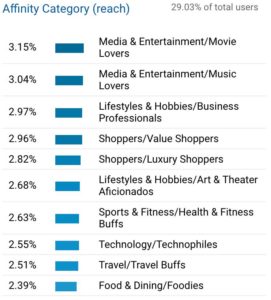It is one thing to know the best marketing strategies and how to use them individually. It is another to put them into a comprehensive marketing strategy that delivers real results and improves your sales quickly. Creating a content marketing strategy is a time consuming process that a professional marketing agency can assist with, though it is possible to create one yourself if you are willing to dedicate the time and effort to learn some digital marketing basics. The following guide can help you create a marketing strategy for your company when you are ready to improve your marketing efforts.
Writing For Your Target Audience

Before creating your message or thinking about advertising copy, it is important to identify your target audience. Think about the problems your product or service might solve and who is most likely to be facing those concerns. When identifying your target audience, you should be considering the age, occupation, gender, and general habits of your ideal customer, among other small details, to better understand who will most likely make a purchase based on your messaging.
Narrowing down your target audience helps you craft a message specifically designed to encourage them to purchase your product or service, while casting a wider net dilutes the message and makes it less memorable, ultimately wasting your time and marketing dollars.
Performing Sales Driven Keyword Research
Next, list out all of your products and services and think of words related to them. These words will form the foundation of your keyword research phase, which will help you determine the best words to use in your copy. In digital marketing, search engine optimization (SEO) is an important keyword-based strategy. When you insert relevant keywords into your website and advertisements, search engines will be able to find your content when someone searches for similar information. Particularly relevant websites are displayed at the top of search results pages, providing valuable exposure for your brand.
Identifying Specific Product Related Keywords
Choosing the first keywords you find when you perform your research means that you will be choosing popular keywords that other companies in your industry are likely already using. This means that there will be strong competition for those words, and your information may not reach any searchers. Instead, begin researching more unique keywords and searches related to your products. These keywords will have a long list of smaller, less popular keywords under them from which you can choose.

Lower volume keywords may not be as popular, but they are worth using. Not only is there less competition for these words, which helps your brand stand out, but is more likely that these keywords get more and more specific as you go down the list. Look back at your description of your ideal customer and think about what specifically they might want to know about your business. They may be searching for a dentist, for example, but they may more specifically be seeking information about dentists who are located in Fairfax, VA. The more specific your keywords, the more targeted your audience.

Filter Keywords Based On Value
Once you have made a list of relevant keywords, rank them based on the value they provide your business. You should consider their relevance to your products or services, the difficulty of obtaining traffic from using those keywords, and the volume of monthly searches you can expect from using those keywords. Select the top three or four for your first set of articles, and review the list on a regular basis to see if any words have become more or less valuable in the interim.
Writing and Distributing Content
Your website should be a source of valuable information and expertise for customers. You can use each of your high-performing keywords as the topic of an article, allowing them to stand out when search engines begin looking for relevant articles for a query and providing readers with information that you already know they are seeking. Generally, articles should be between 600 and 1000 words long and blogs should be posted on a regular basis, whether weekly or monthly.
This shows search engines that your site is active and constantly updated with detailed information. Articles that are too short are not easily discovered in searches, and longer articles can be cumbersome for the reader. The ideal length allows you to naturally use keywords multiple times and provide readers with thoughtful, well-organized information.
Perform On-Page SEO
When posting your articles, check for proper headline formatting, add alternative text to your images, and ensure that any links used to other articles or web pages are not broken. Use the chosen keyword for each article wherever possible to increase the likelihood that a search engine will find the page. These elements further cement your website as a trustworthy, informative source and make it even easier for search engines to recognize that value, helping your site climb higher in search engine results pages.
More information about on-page SEO
Distribute Your Content Online
For maximum exposure, distribute your content across various channels and platforms, such as social media pages, and use link building strategies, like getting your site mentioned on popular local blogs. This helps you create a wider reach for your message and attract new buyers as a supplement to your SEO strategy. However, it is important to maintain your optimized web pages, so implement new best practices and update keywords as necessary for the best results over an extended period of time.

Professional Content Marketing Strategy Support
While it is possible to create your own content marketing strategy using the steps outlined above, seeking guidance from a professional digital marketing agency is worth the extra cost. Our team of experienced digital marketers understand the detailed strategies necessary to create effective marketing plans based on your company’s goals and ideal audience.
We can design a customized digital marketing campaign for your company using various digital marketing & content marketing strategies, implement it, and monitor the results to ensure that you receive regular traffic from your ideal audience.








